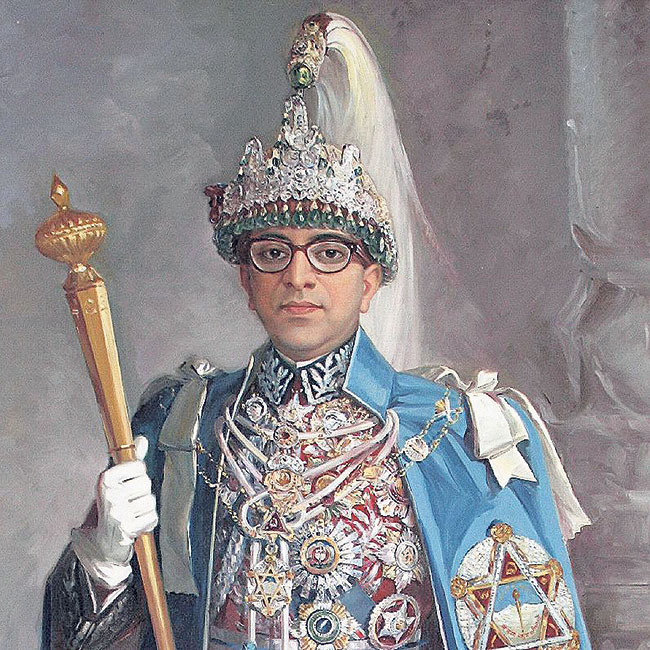It was May 2016. Scholars from Taiwan, China, Nepal and India were presenting their views at a three-day seminar on Nepal-India-China relation in Kathmandu. Professor Mahendra P Lama and former Indian Ambassador to Nepal Rakesh Sood were two of the presenters while I was a participant. In his presentation Sood was critical of what he called ‘Mahendra model of nationalism.’
I was not surprised. Mahendra-bashing has become a hallmark of what they call progressive thinking in the past few years. But what really is Mahendra model of nationalism?
This term was first used by then Indian Prime Minister Jawaharlal Nehru to describe king Mahendra’s politics. From Indira Gandhi to Rajiv Gandhi to later generations of Indian scholars including SD Muni and Sood continue to use this term.
When Indians talk about king Mahendra, they invariably criticize him as they put their country first. They are nationalists and I respect Sood for being one.

Why do Indians refer to Mahendra model of nationalism so often and why do they criticize it?
Nepal and East India Company were starting to enjoy good relations particularly after 1857. India had been fighting against the British Raj. The 1857 mutiny, also called First War of Independence in India, was the strongest of heretofore movements against the British Raj and had posed a real threat to British rule. It was then that Jung Bahadur Rana offered to assist the British with about 16,000 Nepali soldiers to quash the mutiny.
From this point on, Indians have not regarded Nepali soldiers with respect. This incident is rooted in the historical memory of Indians. What happened during the 1950s suggest the same.
The king who saved Nepal

Forgotten Hyderabad
After India’s independence, partition violence led to bloodshed, as half a million people were killed and millions displaced. Hyderabad saw massive loss of life and property. PM Nehru could not calm the uproar. India had its own army but it was unprofessional. Nehru then asked Nepal for military help. Nepal sent 14,000 professional army men to control the Hindu-Muslim riots—which are known as ‘Hyderabad Action’ in Nepali history.
That was the first dispatch of Nepal Army for ‘Peacekeeping Mission’. The Nepali soldiers saved many lives there but this also showed why the Indian army was inferior to Nepal Army. Nepal had done a big favor to India. Instead of being grateful, India imposed on Nepal a condition that Nepal would buy arms and ammunitions only from India. This provision was somehow retained in the 1950 Nepal-India treaty.
Then Indian military officers began to come to Nepal and serve as if they were Nepali army.
In 1951/52, major generals of Indian army began to advise King Tribhuvan to downsize Nepal Army from 42,000 to 9,000. On their recommendation, King Tribhuvan also decided to demote army officers. Many officers preferred to resign than to suffer this humiliation. This was the result of incompetence of King Tribhuvan.
Indian generals actually wanted to dissolve Nepal Army and integrate it in Armed Police by inducting Nepali Congress combatants into it. King Tribhuvan had not objected to this proposal.
An ugly incident happened around this time. Nepali Congress combatants, led by K I Singh, took control of Singha Durbar. Nepal Army positioned there took the situation under control.
Yet Indian troops remained in Nepal. They were stationed in Jawalakhel and many northern border points.
When King Mahendra succeeded Tribhuvan in 1955, he started resisting Indian meddling. Nepali Congress, King Tribhuvan and Indian generals had stood together to serve India’s interest. King Mahendra reached out to China. Incidentally, Sino-India war broke out in 1962 and India was defeated and Indians realized that they could not do as they wished in Nepal. Nepal forced Indian troops to leave the country. India obliged. King Mahendra saved Nepal from becoming India’s protectorate.
Keeping Indians happy
It was then that New Delhi began to describe Mahendra’s politics as ‘Mahendra model of nationalism.’ Indian scholars are continuing with what Nehru had started.
Since he ascended to the throne, Mahendra spared no efforts to establish Nepal as an independent and sovereign country. He sought membership of the UN, which India opposed. The king knew that if Nepal obtained UN membership, it could be safeguarded against possible Indian aggression. So he applied for it without India’s notice. Nehru smelled a threat and tried to abort the effort but did not succeed and Nepal became the UN member.
We make prejudiced judgments about characters of our history sometimes. Even in Nepal, there are those, including Nepali politicians, who always vilify King Mahendra. I wonder if they do so out of habit or just to keep Indians in good humor.
Nepali Congress has many such politicians. Congress should decide if Nepal would be better off with Indian Army taking control. It must tell Nepali people if removing Indian troops from Nepal was wrong and if UN membership was also a mistake.
It is a pity that even Nepali scholars, obviously because of their greed for money and privileges, have joined Indian scholars to demonize a figure that actually contributed so much for Nepal’s survival. I am sorry but this is tantamount to treason.
Just as King Prithvi Narayan Shah was the founder of modern Nepal, King Mahendra was the savior of Nepal in the 20th century. One should not judge him only based on the Panchayat system that he introduced.
As Nepalis we should all work for prosperity but we should not compromise on our ethics and sense of being Nepalis. Let us not project our historical figures in negative light just to keep some foreigners happy. Let’s not lose the ground where we stand.
The author, an ex-brigadier general of Nepal Army, is a guest professor at the Leshan
Normal University, China


































